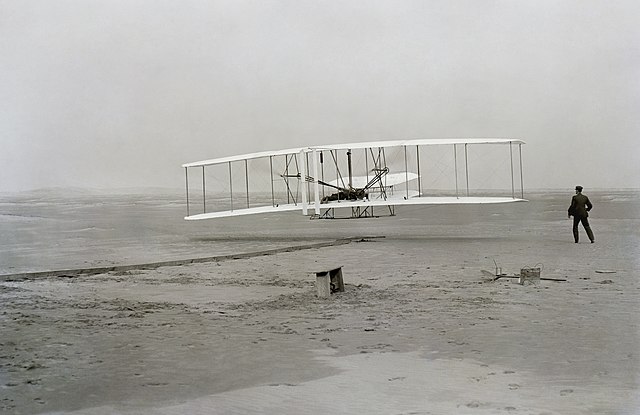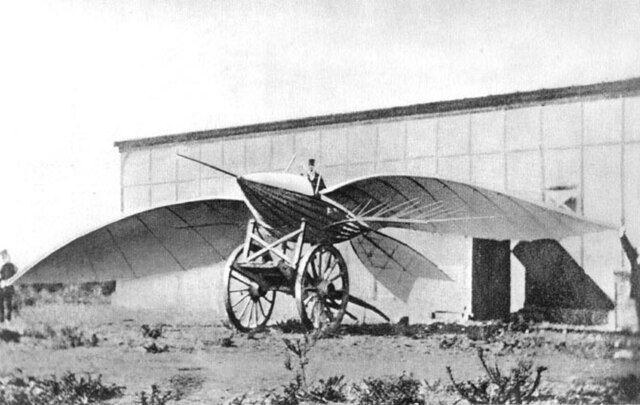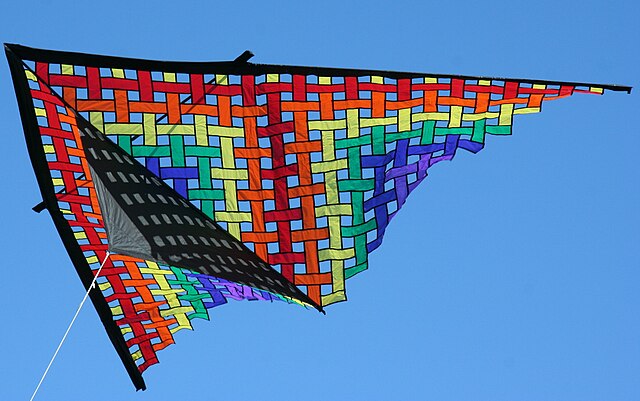An airplane or aeroplane, informally plane, is a fixed-wing aircraft that is propelled forward by thrust from a jet engine, propeller, or rocket engine. Airplanes come in a variety of sizes, shapes, and wing configurations. The broad spectrum of uses for airplanes includes recreation, transportation of goods and people, military, and research. Worldwide, commercial aviation transports more than four billion passengers annually on airliners and transports more than 200 billion tonne-kilometers of cargo annually, which is less than 1% of the world's cargo movement. Most airplanes are flown by a pilot on board the aircraft, but some are designed to be remotely or computer-controlled such as drones.
The first flight of an airplane, the Wright Flyer on 17 December 1903
North American P-51 Mustang, a World War II fighter aircraft
An All Nippon Airways Boeing 777-300ER taking off from New York JFK Airport
Le Bris and his glider, Albatros II, photographed by Nadar, 1868
A fixed-wing aircraft is a heavier-than-air flying machine, such as an airplane, which is capable of flight using aerodynamic lift. Fixed-wing aircraft are distinct from rotary-wing aircraft, and ornithopters. The wings of a fixed-wing aircraft are not necessarily rigid; kites, hang gliders, variable-sweep wing aircraft, and airplanes that use wing morphing are all classified as fixed-wing aircraft.
A Boeing 737 airliner is an example of a fixed-wing aircraft
The fixed wings of a delta-shaped kite are not rigid
Children flying a kite in 1828 Bavaria, by Johann Michael Voltz
Le Bris and his glider, Albatros II, photographed by Nadar, 1868







